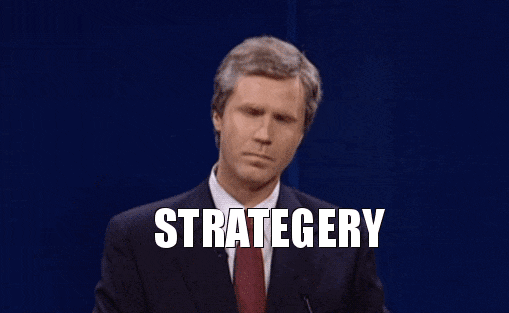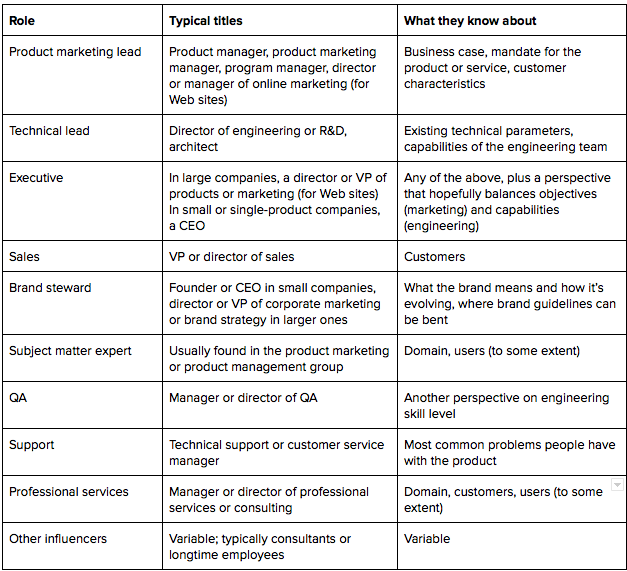 Your company’s marketing content is a tool for communication. Are you using it in the right way for your business, to help drive results and create a meaningful connection with a targeted audience?
Your company’s marketing content is a tool for communication. Are you using it in the right way for your business, to help drive results and create a meaningful connection with a targeted audience?
If you don’t have a documented content marketing strategy, the answer is probably “no.”
What’s a content marketing strategy?

A content marketing strategy is a plan for creating, delivering and maintaining useful marketing content designed to attract, engage and acquire a targeted audience.
It’s different than a core content strategy, although they’re connected and very similar. While both lead to more efficient processes, better customer experiences and well-managed content, a core content strategy and a content marketing strategy guide two different efforts.
Here’s a quick breakdown of each:
Core Content Strategy
What is it?
A plan for the creation, delivery/publication, and maintenance of useful content across an entire enterprise.
The core content strategy should be the foundation of your content marketing strategy.
What does it do?
A core content strategy helps businesses manage all of the content they have.
What does a content strategist do?
Considers all of an organization’s content and shapes the way it influences people’s experiences with the brand.
Content Marketing Strategy
What is it?
A plan for creating, delivering and maintaining useful marketing content designed to attract, engage and acquire a targeted audience.
The content marketing strategy should be guided by and ladder up to the core content strategy.
What does it do?
A content marketing strategy should guide content marketing efforts.
What does a content marketing strategist do?
Plans for the publication of marketing content, aligning with the overall strategy that the content strategist has formulated in partnership with stakeholders.
Both strategies should answer these questions:
- What is your company’s mission?
- What are your business goals?
- Who is your target audience?
- What content should you produce, procure, curate, and share?
- What outcomes does providing this content help us achieve?
- From ideating to creating and publishing, how will you execute content?
- How will you measure the success of your content?
A core content strategy will answer for all content (onsite and offsite), while the content marketing strategy will answer for content marketing pieces (those with a soft-sell sales approach designed to attract customers and retain them).
Don’t have a documented content marketing strategy? You’re not alone.
While 72% of B2B marketers said that developing a content strategy contributed to their organization’s increased success, only 27% reported actually having a documented content marketing strategy, according to the Content Marketing Institute’s research.
Maybe it’s because it’s too much of an effort to document your strategy. Maybe it’s because you don’t know how.
Whatever your excuse is for not having a content marketing strategy, I recommend taking the wise words of Shia Labeouf to heart:
DO IT. JUST DO IT.

Good news: We can help.
How to Create a Content Marketing Strategy
1. Refer to your core content strategy statement.
Strategic content marketing begins with a solid core content strategy. The first step in developing your content marketing strategy is to make sure you have a core content strategy defined and documented.
Your core content strategy should define content objectives, competitive differentiators, brand values and voice and tone. Here’s a mad lib, fill-in-the-blank approach from A List Apart:
<Organization, Department, Property, Section> helps our company accomplish <this goal> and <this goal> by providing <descriptive phrase> and <descriptive phrase> content that makes <this audience> feel <this emotion or adjective> and <this emotion or adjective> so they can <complete this task> or <complete this task>.
This statement will be the foundation for your content marketing strategy and can be informed by the steps below.
2. Engage the right stakeholders.
A strategy should be based on understanding what you’re trying to accomplish through creating marketing content.
It’s important to talk to the right project owners and influencers to determine the marketing goals and success metrics. This is typically done through one-on-one interviews with the key project stakeholders.
Your stakeholders will be the people in your organization who fund, build, test, market, sell, support or influence marketing materials.
Here are a few examples of role types to involve and what they can provide, from boxes and arrows:

Here are a few key questions to ask your stakeholders:
- What is this product (blog, resource center, brochure, etc.) meant to be?
- Who is the ideal audience for this product?
- What should this project accomplish for the business?
- How will you personally define success for this project?
- What does this organization offer that no one else does?
- Where does this organization deserve to win, and how does that impact a customer’s experience?
Stakeholder interviews will result in a clear set of marketing goals as well as specific content objectives, which will be critical in determining the Key Performance Indicators overall.
Once you have a clear definition of your business goals, you need to get to know your customer.
3. Get inside the head of your audience.
Deepen your understanding of your target audience’s needs so you can understand what your business has to offer them with these exercises.
Create Personas
Personas are generalized representations of your ideal customers that help a team of content creators understand the customer, see them as a real human, and start to tailor content to them.
Personas can be created using market research and insights from your current customer base through surveys or interviews.
Hubspot gives great practical tips for getting the info you need to develop personas:
- Look through your database of current customers for trends about how they find and consume content.
- Use Google Analytics to understand where your visitors live, their age, gender, and technology preferences.
- Use form fields on your website forms to capture important persona information (e.g. business type, job title, etc.).
- Talk to your sales team to understand what types of customers are ideal.
- Interview current customers and customer prospects to find out what they like about your product or service and what their pain points are.
Customer interviews
For deeper insights into your customers’ needs, there’s no substitute for simply having a conversation with them. Customer interviews are an important part of understanding what drives your audience.
An interview provides an opportunity to uncover your ideal customer’s goals, behaviors, objections, challenges and fears.
Identify current customers who make up your desired audience and work with them to set up an interview time. Here are a few key questions to start with:
- What are the biggest pain points or frustrations in your line of work?
- What was going on that made you seek out our product or services?
- What made you ultimately decide to go with our product or service?
- Exactly what does our product or service help you do?
Empathy mapping
The best way to understand a customer’s needs? Understanding them and making them your own. An empathy map is a collaborative tool to help get inside a customer’s head and understand their needs.
An empathy map captures emotional information about your target audience, including:
- What they’re hearing - What’s influencing this person?
- What they’re seeing - What is their environment when using or seeing your product?
- What they’re thinking/feeling - What really matters to them? What keeps them up at night?
- What they’re saying/doing - What is their attitude and behavior?
- Their pains - What are their deepest frustrations?
- Their gains - What are they trying to achieve?
This exercise is a great opportunity for the larger group working on a project to be a part of in order to understand a user and know what a business can offer that’s truly helpful. See how to create an empathy map with your team here.
Now that your have a clear picture of who your ideal customer is and what their needs are, you’re ready to get your strategy on paper.
4. Document your content marketing strategy.
It’s time to document your strategy. This statement should outline your key business goals, user needs and a plan for how you will create content to address both.
In addition to your stakeholder interviews and audience research, this statement should be guided by your core content strategy.
Here are some of the main components to include:
- Business goals for content marketing. Why are you creating content? This should be a statement of the goals you have for marketing content, the unique value you can provide to a user and how you will measure success.
- Your target audience. Describe the specific audience you’re creating marketing content for. Be sure to include their needs, the desired engagement and actions you want them to take, and how they’ll benefit from the content you’re creating.
- The content experience. This should detail how content efforts will address both business goals and user needs. It should also explain what the experience will hold for your desired audience at every point in their journey, from first interaction, second, sharing content with family and friends, conversion and beyond.
- Channel plan. This should list the platforms and channels you’ll use to communicate, objectives for each and how they function with each other in the ecosystem of content creation
5. Create a plan for execution.
With your strategy in place, it’s time to establish a plan for creating content.
Determine content types. Use personas and customer interviews to determine the right content types for your audience. Some of the most popular include:
- Blog posts
- How-Tos
- Ebooks
- Infographics
- Videos
- Podcasts
Establish a process for content creation. This plan should be a step-by-step guide for content creation, from brainstorming to a finished product, including:
- A schedule. Identify how much you need of each content type, how often you’ll create and publish content.
- The brainstorm process. Designate who’s responsible for coming up with ideas and when, plus who will approve ideas.
- The creators. Decide who will create content (videographers, designers, writers, etc.).
- A chain of approval. Assign content approval to the appropriate people (editors, managers, subject matter experts, etc.).
Plan for promotion. Get the most life (maximum reach and effect) out of your content with a plan to promote it. This should include where you’ll promote your content, the duration of promotion, and how much you’ll spend. Some promotion types to consider:
- Promoted social media ads
- Search ads
- Email marketing
- Influencer marketing
6. Identify what to measure for success.
Your content marketing strategy is only valuable if it’s helping you accomplish your business goals. To determine if it’s working, you need to have key performance indicators (KPIs) and a process to measure them in place.
KPIs are the high-level metrics that are the most critical to evaluate your content performance. They can include social media engagement, site visitors, email subscribers earned, completed registration forms, sales increases, etc.
First, you’ll need to identify how you’ll measure your success metrics. Moz provides an excellent guide for setting up your tracking and analytics.
The Content Marketing Institute offers a great tip for knowing what to measure:
Measurement can be as simple or as complicated as you make it. Don’t measure simply for the sake of having some numbers to present to your upper management. If you aren’t certain what you should be measuring, ask yourself these two questions:
- Do these metrics support my key goals?
- Can I take action on these metrics (i.e., will they provide me insight into how I can improve my program)?
Next, you need to establish a schedule for tracking your content’s performance. Depending on the content type, channel and how it’s promoted, this could mean monitoring performance daily, weekly or monthly.
Now you’ve got all of the pieces to craft your strategy, it’s time to spread the word.
7. Share your strategy.
Once you’ve got your strategy documented, your plan in place, and roles and responsibilities defined, it’s time to share it all with appropriate team members and key stakeholders. And everyone else.
A content marketing strategy can help break down silos in your company and make sure everyone is working toward the same goal.
8. Revisit and Refine.
Certain elements of your content marketing strategy should stay the same, like your mission and your business goals. Other pieces will need to be updated over time.
To make sure that your content marketing strategy remains effective, consider revisiting your channel strategy, content types, KPIs, and processes every year, or every quarter if you’re just kicking off your program.




